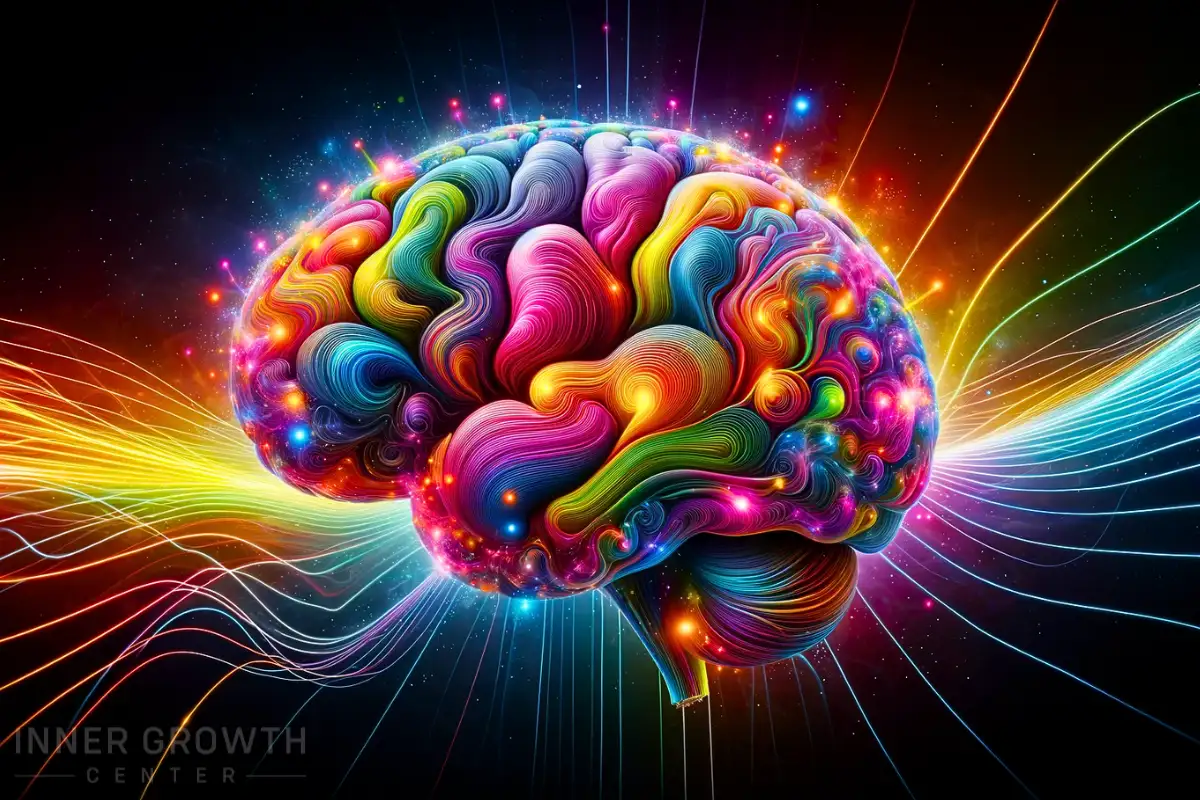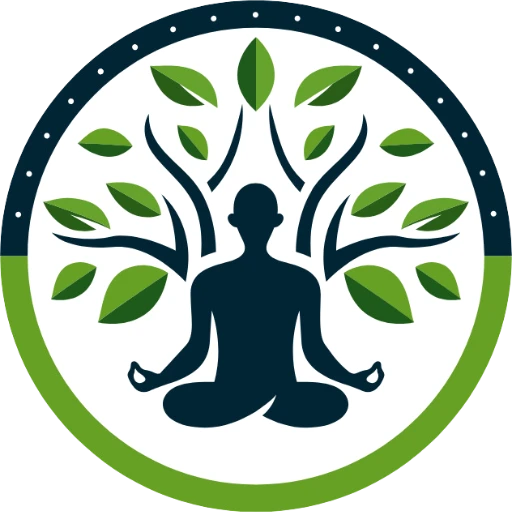The Law of Attraction is the belief that positive or negative thoughts bring positive or negative experiences into a person’s life. It’s based on the idea that like attracts like, meaning our thoughts and emotions can directly influence the events, opportunities, and people we encounter.
Have you ever wondered if your thoughts could shape your reality?
Welcome to the concept of the Law of Attraction, a principle suggesting that positive or negative thoughts bring positive or negative experiences into a person’s life.
This intriguing idea has captivated minds for centuries, blending the boundaries between philosophy and practicality.
What if the key to achieving your desires lies within your own mind?
How can we harness this law to improve our lives, relationships, and careers?
Here we explore the Law of Attraction, its principles, applications, and the science behind it.
Follow on to discover how our thoughts and emotions can become powerful tools in crafting our reality.
What is the Law of Attraction?

Ever wondered why some people seem to attract success, happiness, and wealth with seemingly little effort?
This is where the Law of Attraction comes into play.
It’s a belief that by focusing on positive or negative thoughts, people can bring positive or negative experiences into their life.
Simply put, it’s the idea that like attracts like.
The roots of this law can be traced back through various philosophical and spiritual traditions.
It gained significant attention in the early 20th century with the New Thought movement and has seen a resurgence in popularity with books and films like “The Secret.”
In today’s context, the Law of Attraction is often discussed in relation to personal development and achieving goals.
It suggests that by envisioning our desires and believing in their possibility, we can attract those things into our lives.
This isn’t just about wishful thinking; it’s about how our mindset can shape our reality.
For instance, if I consistently focus on my goals with a positive mindset, I am more likely to identify and seize opportunities that bring me closer to those goals.
The Law of Attraction is the fourth law in our series that collectively offer a deeper understanding of our universe’s spiritual mechanics. Here’s a reminder of all 12 laws we’re exploring:
- Law of Divine Oneness
- Law of Vibration
- Law of Correspondence
- Law of Attraction (this article)
- Law of Inspired Action
- Law of Perpetual Transmutation of Energy
- Law of Cause and Effect
- Law of Compensation
- Law of Relativity
- Law of Polarity
- Law of Rhythm
- Law of Gender
Each law is a piece of a larger puzzle, and understanding one helps us to understand the others better.
The Power of Thoughts and Emotions

At the heart of the Law of Attraction lies a fundamental belief in the power of our thoughts and emotions to shape our reality.
It’s based on the idea that our persistent thoughts and deep feelings are like magnets, drawing similar experiences into our lives.
Imagine your thoughts as seeds planted in the garden of your life.
Nurturing positive thoughts allows for flourishing experiences, while dwelling on negative thoughts can grow a reality filled with similar negativity.
Our emotions play a critical role in this process, acting as amplifiers of our thoughts. Feelings of joy, love, and excitement, when aligned with positive thoughts, can act as powerful catalysts, speeding up the manifestation of our desires.
In contrast, negative emotions such as anger or sadness can dampen this effect, creating a barrier to positive outcomes.
For example, starting your day with a mindset of gratitude and hope can set the tone for a series of positive events, whereas beginning with worry or stress might steer the day towards frustration and obstacles.
In essence, the Law of Attraction encourages us to take an active role in shaping our lives. By consciously steering our thoughts and emotions, we can influence the direction and quality of our experiences.
It’s a principle that extends beyond mere philosophy guiding us to live more intentionally and mindfully.
The Science of Positive Thinking
The concept of positive thinking, often associated with the Law of Attraction, has been the subject of much scientific interest and research.
This exploration seeks to understand how a positive mindset can affect our lives, from mental health to physical wellbeing and interpersonal relationships.
Neurological Effects of Positivity
- Brain Function and Chemistry: Studies in neuroscience have shown that positive thinking can influence brain function. It’s linked to greater activity in areas of the brain associated with emotional regulation, problem-solving, and decision-making. Positive emotions can also release neurotransmitters like dopamine and serotonin, which contribute to feelings of happiness and wellbeing.
- Neuroplasticity and Thought Patterns: The concept of neuroplasticity — the brain’s ability to reorganize itself by forming new neural connections — plays a significant role in positive thinking. Regular positive thinking can rewire the brain to make positive pathways stronger, essentially training the brain to think more optimistically.
Psychological and Emotional Benefits
- Resilience and Coping: Psychological research indicates that positive thinking enhances resilience — the ability to bounce back from stress and adversity. Optimists typically have better coping strategies, focusing on growth and solutions rather than dwelling on the problems.
- Reducing Anxiety and Depression: Positive thinking has been linked to lower rates of depression and anxiety. A positive outlook can lead to healthier ways of dealing with emotional challenges and stressful situations.
Physical Health and Wellbeing
- Impact on Physical Health: There’s evidence suggesting that a positive mindset can contribute to better health outcomes. This includes lower blood pressure, reduced risk for heart disease, better weight control, and improved immunity.
- Longevity and Quality of Life: Studies have found that individuals with a positive outlook often enjoy longer lifespans and a better quality of life. Positivity is linked with healthier lifestyles and choices, which in turn contribute to longevity.
Positive Thinking in Daily Life
- Mindfulness and Gratitude: Incorporating mindfulness and gratitude practices in daily life can foster positive thinking. These practices help shift focus from negative to positive aspects of life, enhancing overall life satisfaction.
- Challenges and Balance: It’s important to note that positive thinking isn’t about ignoring life’s problems. Instead, it’s about approaching difficulties in a more productive and hopeful manner, balancing realism with optimism.
The science behind positive thinking underscores its potential benefits not only for mental health but also for physical wellbeing and overall life satisfaction.
By understanding and applying the principles of positive thinking, individuals can create a more optimistic, resilient, and fulfilling life experience.
How to Use the Law of Attraction
Utilizing the Law of Attraction involves more than just wishful thinking; it requires a conscious effort to focus your thoughts and emotions on your desired outcomes.
Here’s a guide on how to effectively apply this law in your life:
- Set Clear Intentions: Start by being clear about what you want to achieve or attract into your life. Whether it’s a new job, improved health, or stronger relationships, clarity is key. Define your goals as specifically as possible.
- Cultivate Positive Thinking: Maintain a positive outlook. Focus on what you want, not on what you don’t want. Visualize your goals as if they’re already accomplished. Picture yourself in that new job, feel the joy of improved health, or imagine the fulfillment of a wholesome relationship.
- Emotional Alignment: Align your emotions with your desires. Feel the excitement, joy, or gratitude that comes with achieving your goals. Emotions are powerful vibrational forces that can amplify your intentions.
- Affirmations and Visualization: Use affirmations to reinforce positive beliefs and visualize your goals regularly. Create a vision board, meditate, or practice visualization exercises to keep your focus and energy aligned with your objectives.
- Take Action: The Law of Attraction is not just about thinking; it’s also about taking action. Steps towards your goals, no matter how small, are essential. Actions reinforce intentions and keep you aligned with your objectives.
- Practice Gratitude: Be grateful for what you already have and for what’s on its way. Gratitude opens you up to receive more and creates a positive cycle of abundance.
- Be Patient and Persistent: Remember that changes might not happen overnight. Stay persistent with your efforts and patient with the process. Trust that what you’re seeking is also seeking you, and in time, it will manifest.
By incorporating these practices into your daily routine, you can harness the power of the Law of Attraction.
It’s about creating a mindset and environment that nurtures your goals and dreams, turning them from thoughts into reality.
The Law of Attraction and Personal Relationships
The Law of Attraction can have a big impact on our personal relationships.
It teaches us that the energy we emit through our thoughts and emotions can attract similar energies in others, shaping the nature and quality of our interactions and connections.
Attracting Relationships
Just as with other aspects of life, the energy we put out can attract similar energies in people.
If we focus on positive qualities and maintain an optimistic outlook, we’re more likely to attract people who resonate with that positivity.
Conversely, if we’re mired in negativity, we might find ourselves surrounded by people who reflect that state.
Transforming Existing Relationships
This law isn’t just about attracting new relationships; it’s also about improving the ones we already have.
By changing our perspective and attitude towards a person or a relationship, we can often change the dynamic of the interaction.
For example, focusing on the positive aspects of a partner, friend, or family member can enhance the quality of that relationship.
Self-Love as a Foundation
The Law of Attraction in relationships also starts with the relationship we have with ourselves.
Self-love and self-acceptance create a positive vibration that can attract healthy and fulfilling relationships.
If we are at peace and in love with ourselves, we are more likely to attract partners who offer the same level of respect and affection.
Resolving Conflicts
In conflicts, focusing on solutions rather than problems can shift the energy of the interaction and lead to more harmonious resolutions.
The Law of Attraction teaches us to focus on what we want to achieve in a relationship, not what we want to avoid.
In essence, the Law of Attraction encourages us to be mindful of the energy we bring into our personal relationships.
By consciously directing our thoughts and emotions, we can not only attract more meaningful and positive relationships but also improve the ones that are central to our lives.
The Law of Attraction in the Workplace

The Law of Attraction can be a powerful tool in professional settings, influencing career growth, workplace relationships, and overall job satisfaction. Understanding and applying this law at work can lead to a more fulfilling and successful career.
Attracting Career Opportunities
- Visualization and Goal Setting: By clearly visualizing career goals and the steps to achieve them, you can align your energy with these objectives. Visualizing success in a job interview or a big project can set the stage for actual success.
- Positive Mindset and Work Challenges: Facing work challenges with a positive mindset can change the outcome. Instead of seeing problems, focus on solutions and opportunities for growth. This approach can open doors to new possibilities and career advancements.
Enhancing Workplace Relationships
- Positive Interactions: The energy you bring into your interactions with colleagues can shape the nature of those relationships. Approaching colleagues with positivity, understanding, and collaboration can create a more harmonious and productive work environment.
- Resolving Conflicts: Applying the Law of Attraction in conflict resolution involves focusing on positive outcomes and understanding the other person’s perspective. This can lead to more constructive and amicable solutions.
Personal Development and Job Satisfaction
- Growth Mindset: Embracing a mindset geared towards learning and development can attract more opportunities for personal and professional growth. The Law of Attraction encourages an attitude of continuous improvement and openness to new experiences.
- Job Satisfaction: Focusing on aspects of your job that you are grateful for can increase overall job satisfaction. Gratitude can shift your perspective from what’s lacking to the abundance of opportunities and positive aspects of your work.
Manifesting Leadership Qualities
- Leadership Aspirations: If you aspire to be a leader, adopting the qualities of effective leadership in your thoughts and actions can help you embody and eventually step into a leadership role. The Law of Attraction suggests that by aligning your mindset with leadership qualities, you can gradually attract those opportunities.
Incorporating the Law of Attraction into your professional life helps in cultivating an overall environment of positivity, growth, and opportunity both for yourself and those around you.
Reflecting on the Law of Attraction
I often consider the impact my thoughts and emotions have on my life.
This law isn’t just a mystical concept; it’s a reminder of our innate power to influence our world.
It encourages us to be mindful of our mental and emotional landscapes, understanding that they are not just passing states, but architects of our reality.
The Law of Attraction teaches us to cultivate positivity, not just as a fleeting emotion, but as a consistent practice.
It challenges us to envision our best lives and then align our thoughts and actions to make them a reality.
So, as you move forward, think about the energy you’re putting out into the world.
What are you attracting into your life?
And how can you use this powerful law to create the life you’ve always imagined?



